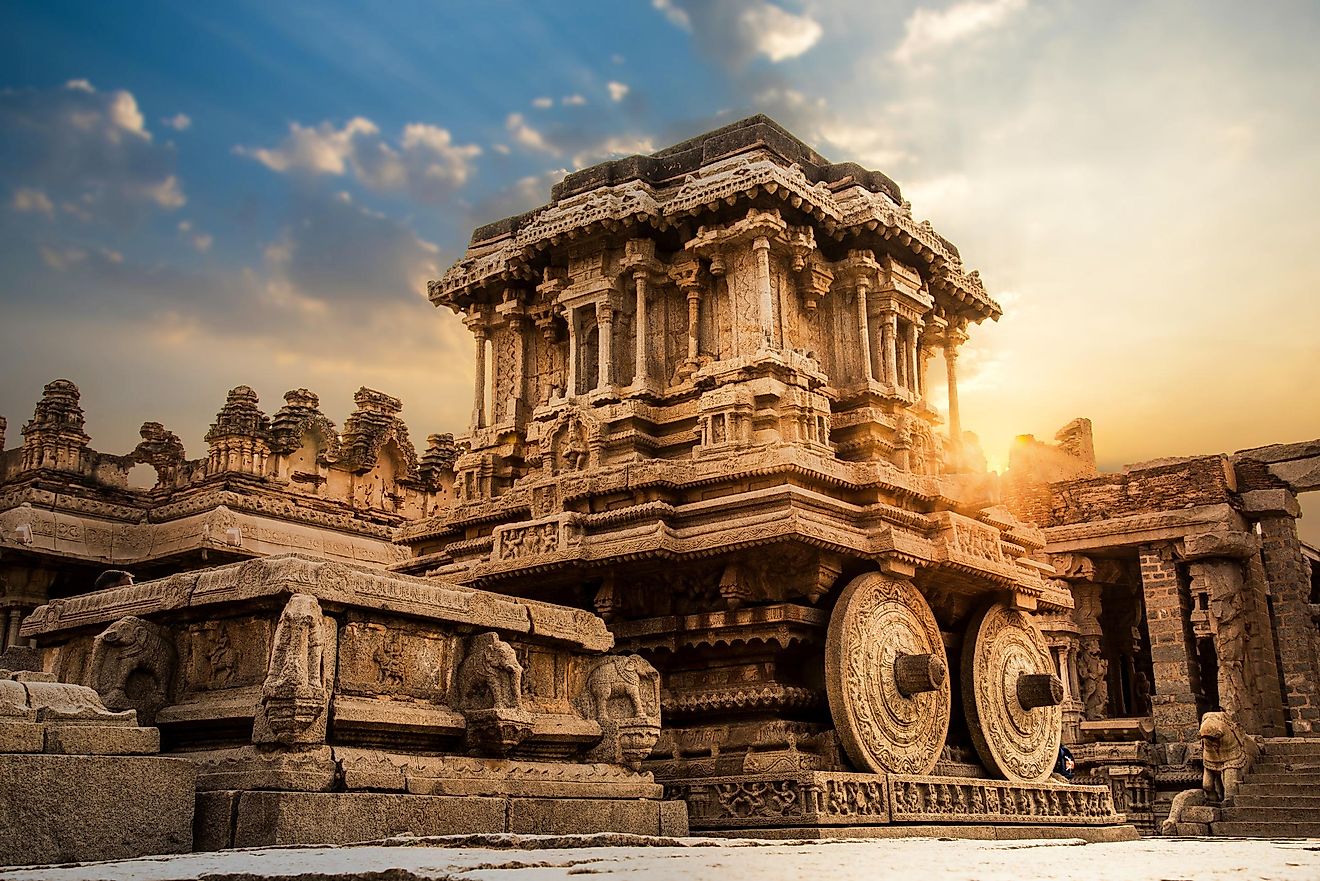Hampi - Unique Ruins Of The Vijayanagara Empire

5. Vijayanagara Greatness
Today, Hampi is a small, peaceful village in Bellary District of Karnataka state of India, boasting of its spectacular ruins that remind visitors of this place about its former glory. Hampi, meaning champion in the local language, truly lived up to its name in the past, being a part of the capital city Vijayanagara of the highly prosperous Vijayanagara Empire. During the 16th Century, Vijayanagara was regarded as the second largest city in the world with a population of around 500,000, representing 0.1% of the global population of that period. The group of monuments at Hampi were designated as a UNESCO World Heritage Site in 1986.
4. Construction and Architecture

Hampi is an excellent example of ancient Hindu art and architecture and also provides a detailed introduction to life as it was in the Hindu empire of Vijayanagara. The site is based along the banks of the River Tungabhadra in a picturesque landscape of hilly terrain and river plains with grand and aesthetically designed temple complexes, royal palaces, riverside structures, monuments and memorials, bastions and gateways, stables and water reservoirs and much more. Hampi’s art and architecture is primarily based on the Dravidian style but the Indo-Islamic style has also been incorporated in secular structures like the Queen’s Bath and the Elephant Stables. Granite, bricks, and lime mortar were the three most important construction materials used to build the structures of Hampi. Some of the famous temple complexes in Hampi include the Krishna Temple Complex with its Sacred Tank, the temples dedicated to the Hindu Gods of Narasimha, Ganesa, Shiva, the Vittala Temple Complex with its stone chariot and musical pillars, and the Virupaksha Temple with its erotic statues.
3. Military and Geopolitical Significance
The group of monuments at Hampi bear witness to the power and geopolitical significance of the Vijayanagara Empire between the 14th and 16th Centuries in southern India. The empire was founded by Harihara I and his brother Bukka Raya in 1336. These Hindu rulers, with an army of around 1 million soldiers, also became prominent for their ability to stop Islamic invasions of southern parts of India for a long period of time. The empire also traded extensively with other empires of the world and trade brought in new knowledge which was quickly accepted by the empire and utilized for the good of the kingdom. The Vijayanagara Empire reached the peak of its success between 1509 and 1530 under the rule of Krishna Deva Ray. Finally, as all good things come to an end, the demise of this ancient empire was triggered by Islamic conquest of the region which was marked by the defeat of the Vijayanagara kings in their fight against the Muslim invaders at the Battle of Talikota in 1565.
2. Religious and Cultural Center
The rulers of the Vijayanagara Empire were famous for their secular and tolerant attitude and openness to new learning processes. Soon, under the rule of a series of able rulers the kingdom flourished as evident by the huge volume of sophisticated art and architectural examples from this period. The kings of this empire generously patronized art, science, literature and architecture which led to the birth of many scholars, artists and architects whose work continue to inspire the world to this date.
1. Conserving Hampi
Recognizing the immense historical significance of Hampi, the World Heritage site is well-protected by the Indian Government under the Ancient Monuments and Archaeological Sites and Remains Act of 1958 and the Rules of 1959. The state government of Karnataka also takes responsibility of conserving the historical site as per the guidelines of the Karnataka Ancient and Historical Monuments and Archaeological Sites and Remains Act of 1961. Special government units are formed with tasks to preserve and protect the structures at Hampi. The staff at these units conduct repair and maintenance work of Hampi's monuments whenever deemed necessary.











